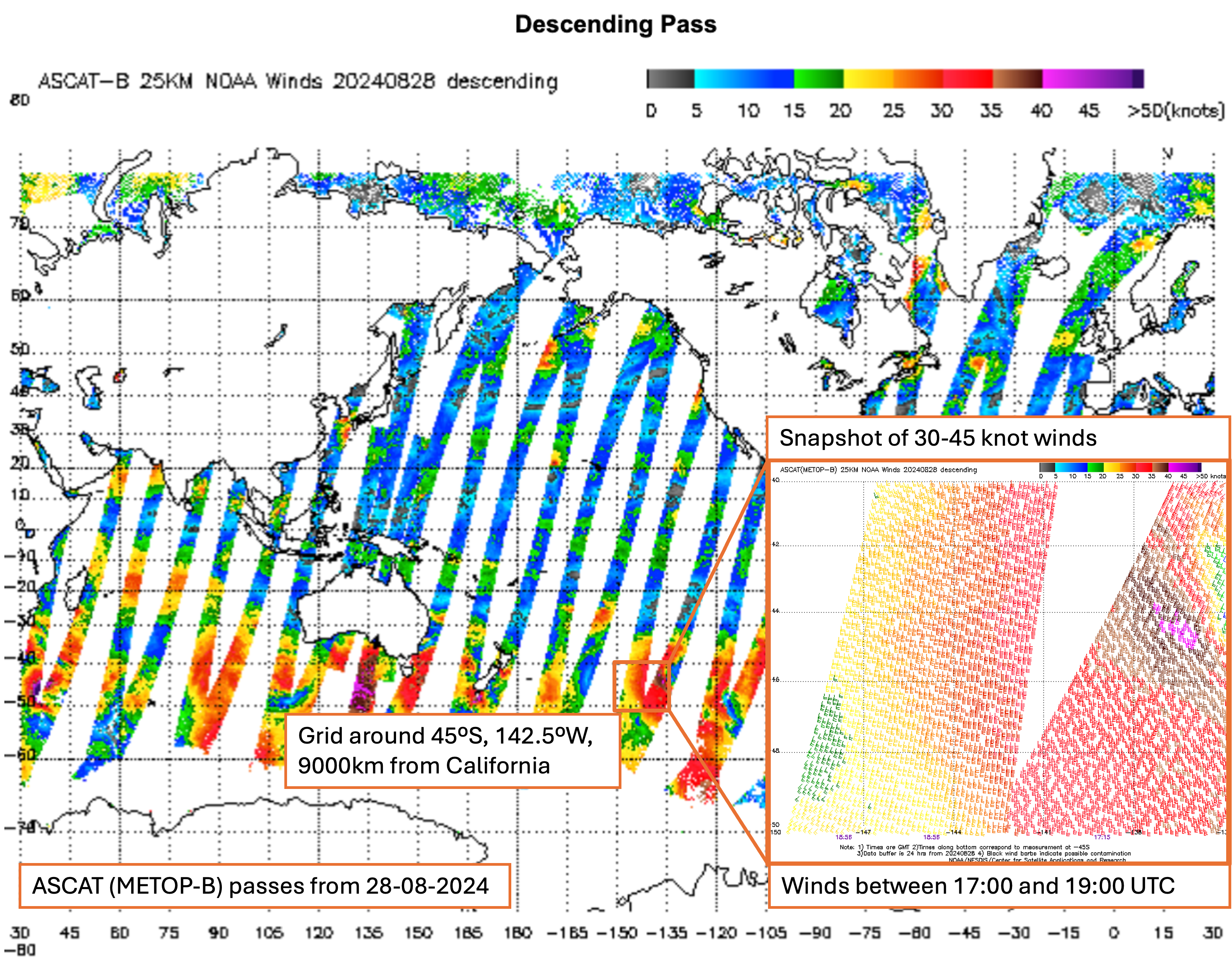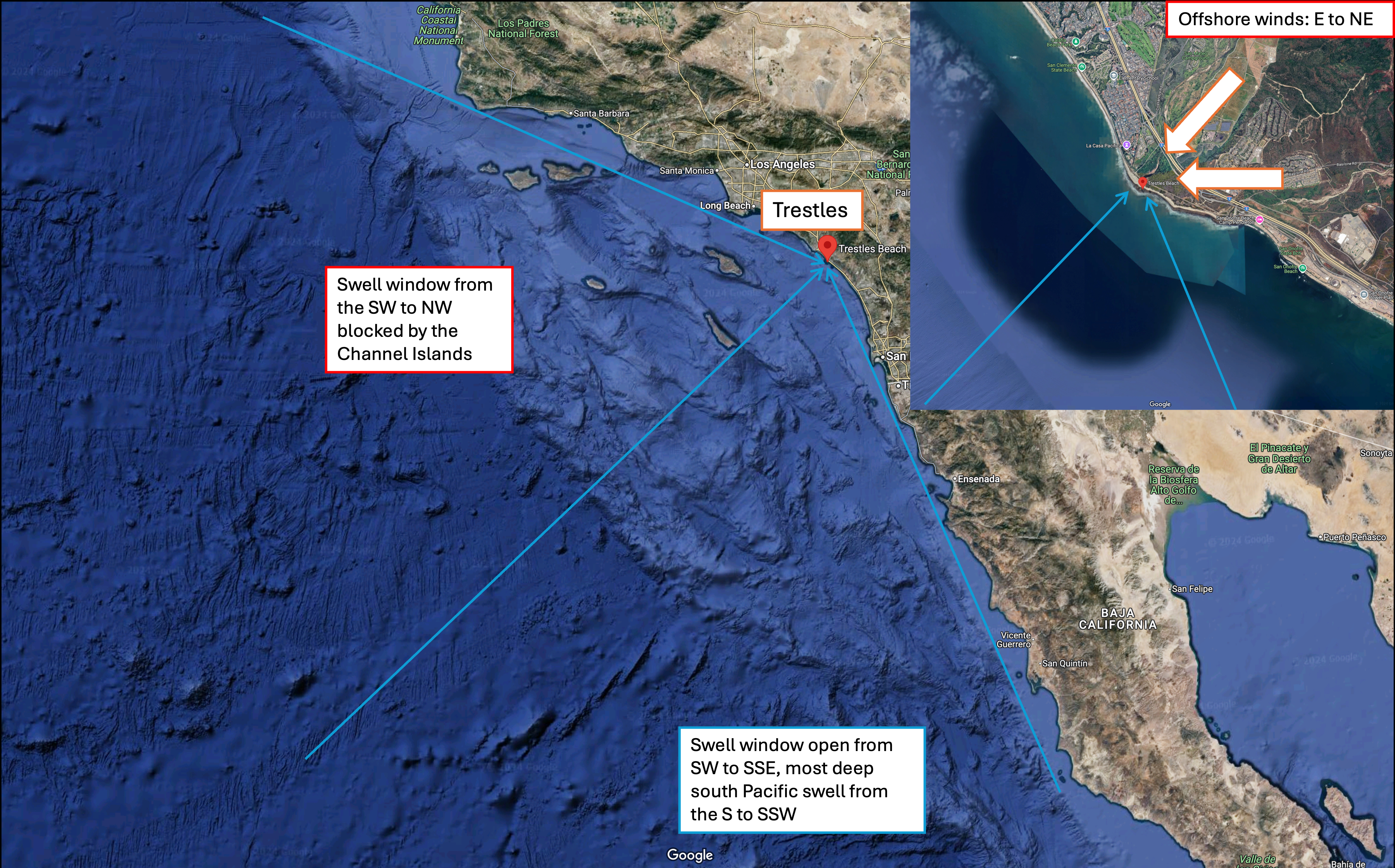The long road to the World Surf League finals
The world surfing tour final is underway in California, with three Australians in the draw for the world championship, but not just these surfers have made the long travel to the northern hemisphere.
Trestles, in southern California, is the home of the World Surf League finals. This is the showdown that concludes the world tour championships, with the best five surfers in the rankings battling it out to crown the world champion for that year. The three Australians that went into this finals showdown are Jack Robinson, Ethan Ewing and Molly Picklum, sitting in either fourth or third place. Sadly, our Aussies were later eliminated.
During the northern hemisphere summer, Californian surfers often find themselves relying on storms from Australian and New Zealand latitudes, more than 8,000 or 9,000 kilometres away, to bring them surf. Powerful storms that move across the roaring forties, brushing past Australian and New Zealand, generate very large seas. These waves propagate away from the storm area, migrating northwards as swell. As the swell travels the length of the globe, the size decreases, but the period increases, maintaining roughly the same amount of overall energy. The long period swells that California (and much of North and Central America) receive often travel more than 10 days after being generated before breaking on the distant shores.

Figure 1: ASCAT satellite data showing a Southern Ocean storm blowing gales directed towards the northern hemisphere in late August. (NOAA)
The figure above shows ASCAT wind data, which is collected by a satellite measuring the “roughness” of the ocean as the wind blows over it. The figure shows a vigorous Southern Ocean storm blowing gales well to the east of New Zealand, over a week and a half ago, on August 28th. This satellite data is also just a momentary image of the storm, but satellite imagery looped of the day shows the storm tracking northwards, a positive sign for a more powerful swell.
Wave heights generated by the storm of around 8 metres will have decayed on the long journey north, arriving in Southern California from the south-southwest around the 1 metre mark, with the period having grown to about 15-17 seconds. Taking about 10 days to reach Trestles, this conveniently had the swell filling in yesterday, the day before the first day of the competition window, which runs between September 6th and 14th.

Figure 2: Swell window and optimal winds for Trestles surf spot in Southern California. (Google Maps).
Conditions have been favourable this morning as Southern California swelters through a string of hot summer days, with light winds and clean head high waves rolling through. As of writing this, both surfers starting in the number 5 seed—Tatiana Weston-Webb on the women’s side and Italo Ferreira on the men’s—have made an impressive run of wins, reaching match 3 and defeating all the Australians in the draw. Tatiana succumbed in her match 3 to defending world champion Carolina Marks, setting up an all-American title match on the women’s side. Italo defeated the Californian Griffin Colapinto, sending him into the title match from the lowest finals day starting seed. A weak seabreeze has been strengthening over the coast but the surface conditions remain mostly smooth into the title matches.